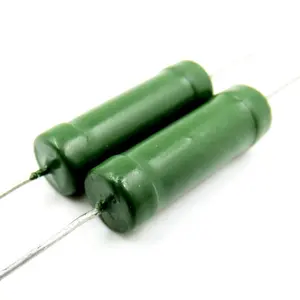Popular in your industry



























































Related Searches:




















































































































Top categories
About high voltage ceramic resistor
Understanding High Voltage Ceramic Resistors
High voltage ceramic resistors are specialized components designed for circuits that operate under high voltage conditions. These resistors are essential in managing and controlling electrical current within a wide array of industrial applications. Their robust construction allows them to withstand substantial voltage levels while maintaining stability and performance.
Types and Configurations
There are various types of high voltage ceramic resistors, each tailored for specific applications and requirements. They can be configured in series or parallel arrangements to achieve desired resistance values and power ratings. Series configurations are often used to create voltage dividers, crucial for reducing voltage to safer levels in a circuit. Parallel configurations, on the other hand, can manage higher currents by distributing the load across multiple resistors.
Technical Specifications
The technical specifications of a high voltage ceramic resistor include resistance, tolerance, and temperature coefficient. These parameters are critical in selecting the right resistor for a given application. The resistance value is indicated by a color code system, which is a series of colored bands that represent numerical values and tolerance percentages. Understanding these specifications ensures the resistor will perform as expected in its intended application.
Applications and Features
High voltage ceramic resistors are utilized in various applications, from power supplies to high-frequency systems. Their features include high resistance values and minimal inductance, making them suitable for high voltage applications. A light dependent resistor, for instance, is a type of variable resistor that adjusts its resistance based on light intensity, ideal for light-sensitive devices.
Materials and Advantages
The materials used in high voltage ceramic resistors contribute to their ability to resist high temperatures and voltage. The ceramic composition provides excellent thermal conductivity and resistance to thermal shock, which is advantageous in fluctuating temperature conditions. These materials also contribute to the resistor's overall durability and reliability.
Safety Considerations
When incorporating high voltage ceramic resistors into electronic circuits, it is crucial to understand their configurations to prevent potential accidents. Ensuring that the resistors are suitable for the circuit's voltage and power requirements is essential for safe operation. Proper understanding and application of these components are paramount in maintaining the safety and efficiency of electrical systems.












































































